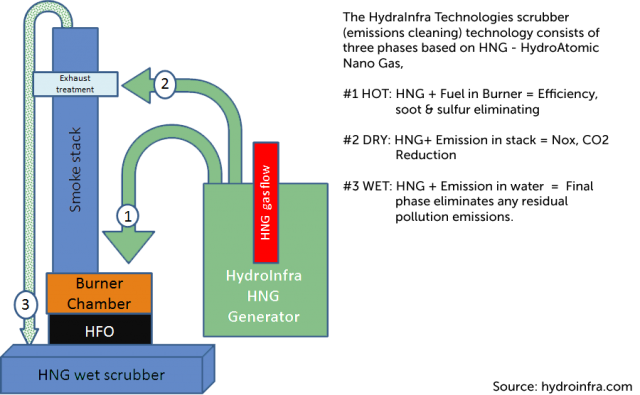
What is HNG?
The water that we all take for granted exhibits fascinating properties depending on how you affect it.
Water freezes, evaporates and conducts electricity / sound.
Water contains 2 basic elements, Hydrogen and Oxygen.
These 2 basic elements can be split, divided and utilized.
Splitting water (H20) is a known science. But the energy costs to perform splitting outweigh the energy created from hydrogen when the Hydrogen is split from the water molecule H2O.
This is where mainstream science usually closes the book on the subject.
We took a different approach by postulating that we could split water in an energy efficient way to extract a high yield of Hydrogen at very low cost.
A specific low energy pulse is put into water. The water molecules line up in a certain structure and are split from the Hydrogen molecules.
The result is HNG.
HNG is packed with ‘Exotic Hydrogen’
Exotic Hydrogen is a recent scientific discovery.
HNG carries an abundance of Exotic Hydrogen and Oxygen.
On a Molecular level, HNG is a specific ratio mix of Hydrogen and Oxygen.
The unique qualities of HNG show that the placement of its’ charged electrons turns HNG into an abundant source of exotic Hydrogen.
HNG displays some very different properties from normal hydrogen.
Some basic facts:
- HNG instantly neutralizes carbon fuel pollution emissions
- HNG can be pressurized up to 2 bars.
- HNG combusts at a rate of 9000 meters per second while normal Hydrogen combusts at a rate 600 meters per second.
- Oxygen values actually increase when HNG is inserted into a diesel flame.
- HNG acts like a vortex on fossil fuel emissions causing the flame to be pulled into the center thus concentrating the heat and combustion properties.
- HNG is stored in canisters, arrayed around the emission outlet channels. HNG is injected into the outlets to safely & effectively clean up the burning of fossil fuels.
- The pollution emissions are neutralized instantly & safely with no residual toxic cocktail or chemicals to manage after the HNG burning process is initiated.
- See diagrams below.

Download How HNG works (pdf)
The word pollution is a general term used to define the effects of multiple toxic substances & elements.
When we talk about the “pollution emissions” from a power plant or a ship we are in fact referring to a toxic cocktail of substances that causes harm to our environment , eco-systems and our health.
Pollutants have been researched and documented. Here are some of the known effects.
- Carbon dioxide (CO2) the primary cause of global warming.
- Sulphur dioxide (SO2): leading source of SO2 pollution,
- Nitrogen oxides (NOx): NOx pollution causes ground level ozone, or smog,
- Particulate matter: Particulate matter (also referred to as soot or fly ash) can cause chronic bronchitis, aggravated asthma, and premature death, as well as haze obstructing visibility
- Mercury: Coal plants are responsible for more than half of the U.S. human-caused emissions of mercury, a toxic heavy metal that causes brain damage and heart problems.
- Other harmful pollutants emitted annually from a typical, uncontrolled coal plant include lead, cadmium, other toxic heavy metals, and trace amounts of uranium.
Micro soot (unburned carbon) can be found in everyone and everywhere on the planet. In the arctic, micro soot becomes a heat sink for the sun accelerating the melting of the ice. 30% or more of the energy potential of the source fuel is lost through heat escaping out of the stack. Another 10% is lost through incomplete burning of the source fuel.